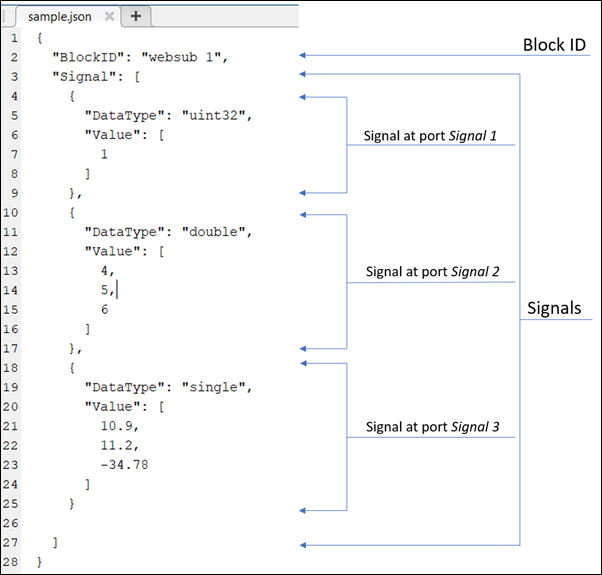WebSocket Publish
Publish data to WebSocket server in JSON format
Add-On Required: This feature requires the Simulink Support Package for Raspberry Pi Hardware add-on.
Libraries:
Simulink Support Package for Raspberry Pi Hardware /
Network
Description
The WebSocket Publish block publishes the data from the Raspberry Pi® to a WebSocket server identified by an IP address and a port. The published data is in JavaScript Object Notation (JSON) format, which can be interpreted by a WebSocket client to visualize the data.
If the WebSocket server is hosted on a network IP address, any device on the network can connect to the sever and access the data.
WebSocket JSON data
This figure shows the signals in JSON format with a unique block label.

Ports
Input
Parameters
Version History
Introduced in R2019b